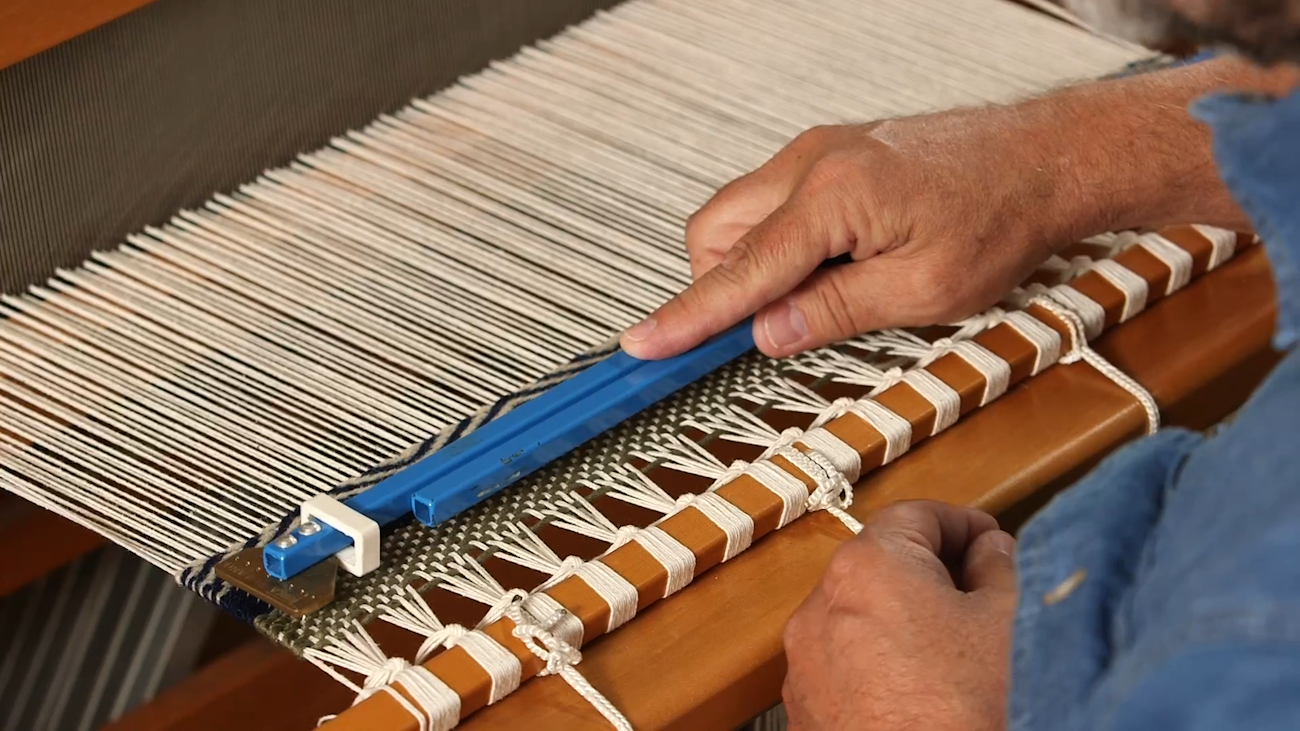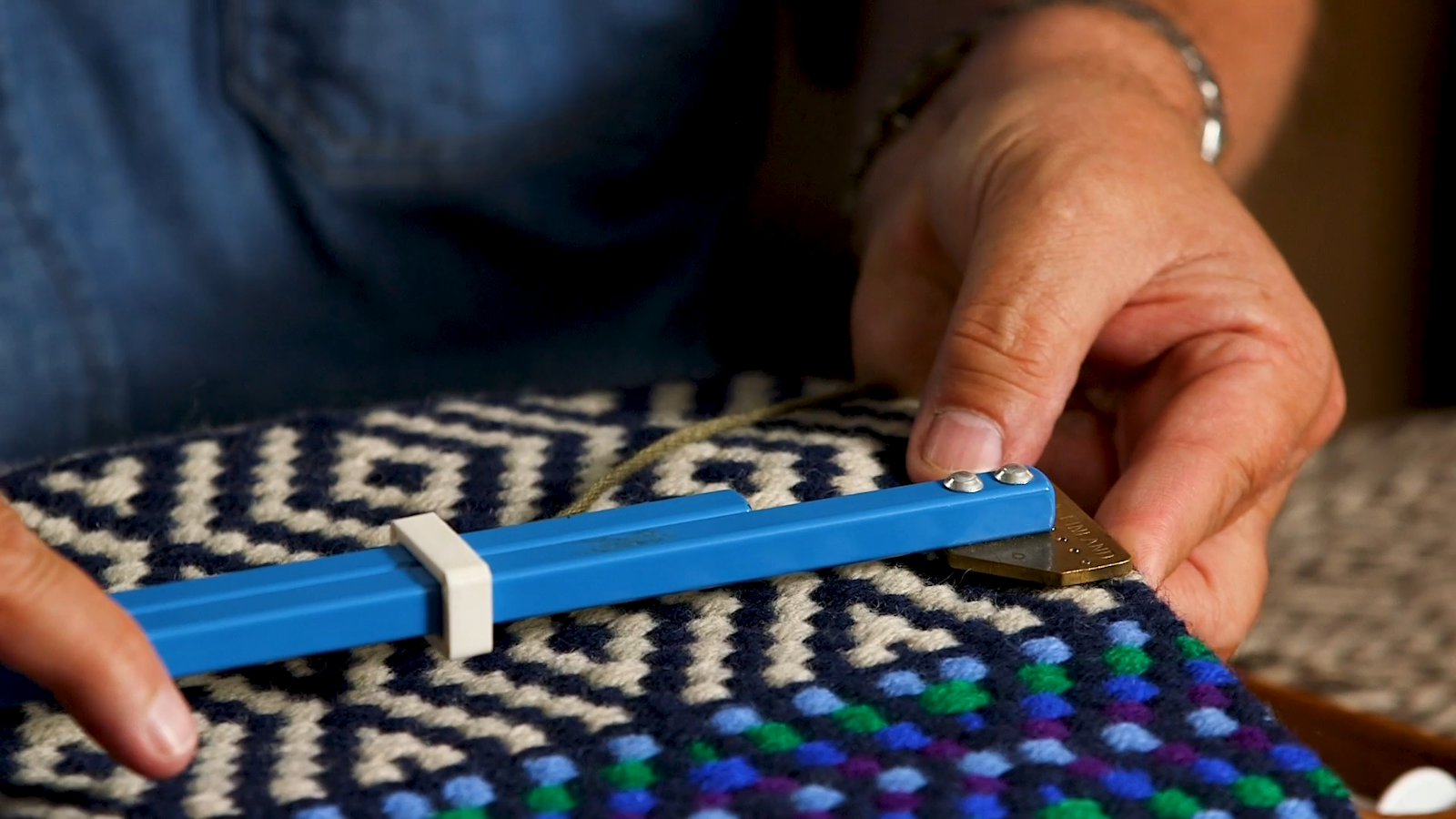I don’t always use a temple, but I often use one even for simple items such as kitchen towels. I find a temple not only keeps my edges straight, but it also helps with the overall tension of a project.
There are some types of weaving that are easier to weave well if you use a temple. One of them is boundweave, so when I was watching The Beauty of Boundweave, our latest weaving course, I was happy to see Tom Knisely discuss the type of temple to use for thick weft-faced weaving and how to place it in your work correctly. If you don’t use the right type of temple or use a temple incorrectly, you run the risk of it not keeping your weaving pushed out to the right width and/or damaging your reed or front beam.

When using a temple, you want to put it in your weaving as soon as possible, which means weaving a header that will accommodate it. Photo from The Beauty of Boundweave video.
For example, Tom will show you:
- The type of temple you need for boundweave
- How to shorten and lengthen a temple’s width
- How to determine the best width for a temple
- Where, when, and how to properly insert a temple into your work.
If you have any questions about temples, I believe you will find their answers in this video.
I know some weavers don’t like to use a temple because you have to move it every few inches, and they feel it disrupts their weaving rhythm. However, I believe if you get into the habit of using a temple, it will soon become second nature and then part of your rhythm. In fact, you may just find yourself using one for all sorts of weaving and not only for boundweave.
Weave well,
Susan

